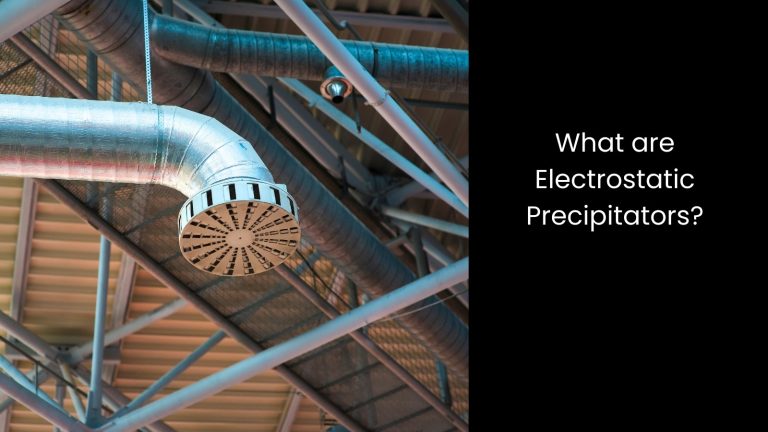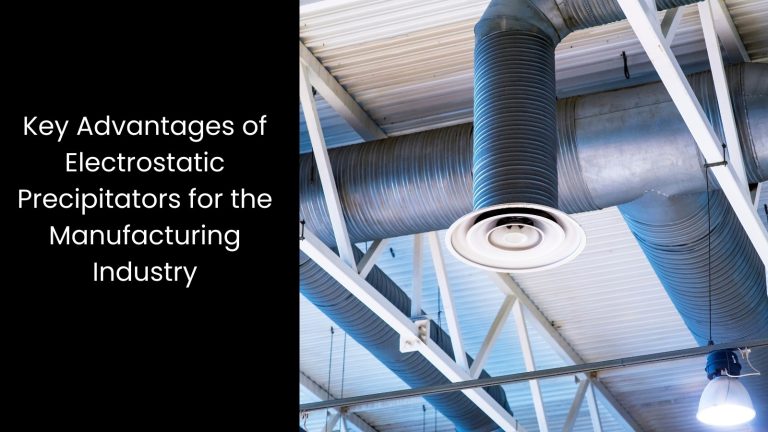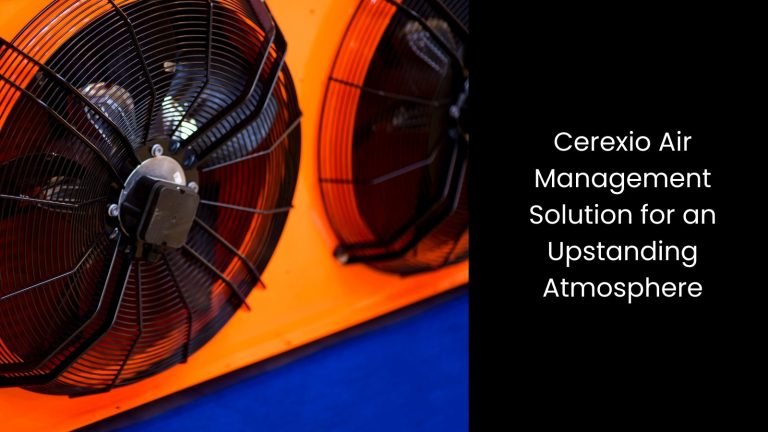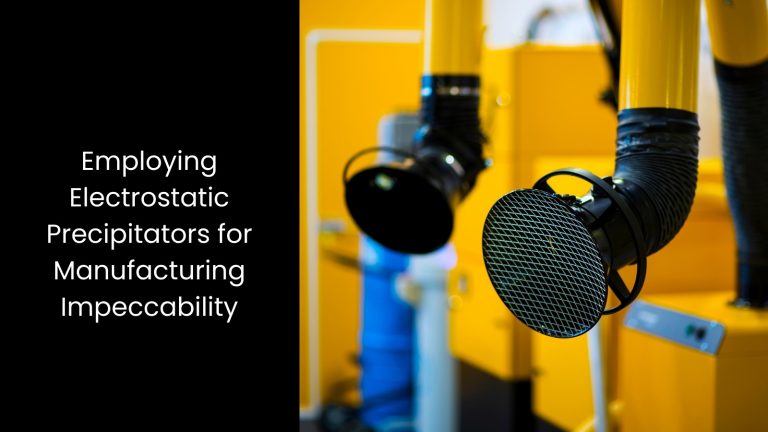Manufacturing is the backbone of Singapore’s economy, and every minute, Singapore is exploring new horizons in this industry. However, the processes that create the products they rely on can also generate harmful air pollution on the other hand. The main problem is that they release those tiny particles like dust, smoke, and fumes into the atmosphere, impacting both the environment and the health of their employees. This is not something that Singapore can give cold should to. This is where the best solution named ‘Electrostatic Precipitators (ESPs)’ comes in.
In this blog article, we explore the advantages of ESPs for manufacturing facilities.
We will understand
What are Electrostatic Precipitators?

- First, let us take you through the history of this development. It was challenging as factories and refineries released toxic smoke into the environment. Frederick Gardner Cottrell, a professor at the University of California, Berkeley, took the first initiative to address this challenge by inventing the electrostatic precipitator back in history. It is an air pollution device that uses the force of an induced electrostatic charge to extract particles from a flowing gas, such as air.
- So, this machine is there to clean dirty air. It works by using static electricity to remove tiny particles, like dust and smoke, from the air. In the initial stage, dirty air goes into the ESP. Inside, the air passes through wires that have an electric charge. This charge makes the particles in the air stick to the metal plates inside the ESP.
- These plates are also charged with electricity. As the particles stick to the plates, they become heavy and fall down into a collection area. Meanwhile, the clean air, now free from particles, goes out of the ESP and into the environment.
- As you can see, ESPs are useful because they can clean the air very well, taking out more than 99% of the tiny particles, as per the reports. They are used in many industries, like power plants and factories, to make sure the air going out is cleaner and safer for people and the environment.
- So, in simple words, it charges particles in a gas stream either positively or negatively, attracting these charged particles towards collector plates with an opposite electrical charge. This process effectively removes particles from the gas stream, ensuring efficient emission control in industries like power generation and manufacturing. This way, it contributes to cleaner air and compliance with environmental standards in Singapore.
Key Advantages of Electrostatic Precipitators for the Manufacturing Industry

Impressive Levels of Efficiency in Particulate Removal
ESP obviously helps the manufacturing industry through its ability to efficiently remove tiny particles from industrial emissions.
The mechanism starts when dirty air containing particles like dust and smoke enters the ESP. The air passes through wires that give the particles an electric charge, as we mentioned above. It can be either positive or negative.
These charged particles are then attracted to metal plates inside the ESP that carry the opposite charge. As the particles stick to the plates, they become heavy and fall into a collection area. Meanwhile, the clean air, now free from particles, exits the ESP and goes back into the environment.
As it is visible, this process is highly effective as it removes more than 99% of the particles from the air. With such capacity to reduce particle emissions, ESPs help industries comply with environmental regulations and create cleaner air for workers and surrounding communities.
This is especially valuable in sectors like metal processing, cement production, and power generation, where large amounts of particulate matter are produced. In another way, ESPs are now popular for their ability to maintain high efficiency over time, ensuring reliable performance in controlling air pollution and supporting sustainable industrial practices.
Minimum Operational Costs
Do you know how important it is to minimise operational costs in manufacturing processes? This is one of the many benefits of ESP, through its efficient and economical design.
As the particles adhere to the plates after passing the first stage that we discussed above, they become heavier and settle into a collection hopper. This mechanism requires minimal additional resources once the ESP is installed and operational.
Unlike other technologies that rely on consumables like filters or chemicals, ESPs have lower ongoing costs because they do not require frequent replacements of parts or materials. Plus, their robust construction and simple maintenance needs contribute to reduced operational expenses over the long term.
This cost-effectiveness makes ESPs particularly attractive in industries where controlling emissions is essential but cost management is critical. For example, in power plants or metal processing facilities where large volumes of particulate matter are generated, ESPs provide a reliable and economical solution for meeting environmental standards without significantly increasing operational overhead.
This way, it is possible for the manufacturing industries to achieve sustainable emission control practices while optimising financial resources for other operational needs.
Compact Design Structures
One of the main features of ESP is its compact design, which optimises space utilisation in industrial settings. Let us express why.
The design of ESPs is compact compared to other emission control devices, occupying less space within manufacturing facilities. This compactness allows industries to install ESPs in areas where space is limited without compromising their operational efficiency.
For example, in power plants or chemical factories where floor space is valuable, ESPs provide an effective solution for reducing airborne pollutants without requiring extensive room. Their efficient use of space also facilitates easier integration into existing production processes, minimising disruptions and optimising workflow continuity.
Since they offer a compact yet powerful solution for air pollution control, ESPs let manufacturing industries meet regulatory requirements and improve environmental sustainability. This is also all while maximising the productive use of their operational premises.
High-Temperature Tolerance
It is a commonly known fact that the manufacturing industry needs equipment that can tolerate different sorts of temperatures. ESP is the number one piece of machinery with the capability to withstand high temperatures in industrial processes.
You already know that ESPs use an electric charge to capture fine particles like dust and ash from hot exhaust gases produced in manufacturing operations. As the hot, dirty air enters the ESP, it passes through a series of wires that impart an electric charge to the particles.
These charged particles are then attracted to metal plates inside the ESP that hold an opposite electrical charge. This attraction causes the particles to stick to the plates, effectively removing them from the gas stream, as we described above.
The materials used in ESPs, such as heat-resistant metals and insulators, are selected for their ability to withstand the elevated temperatures encountered in industrial processes. This can surely range from hundreds to over a thousand degrees Celsius.
This high-temperature tolerance allows ESPs to operate reliably in environments where conventional air pollution control devices may fail due to heat degradation. Industries such as power generation, cement manufacturing, and metal smelting benefit significantly from ESPs’ ability to maintain performance under extreme thermal conditions, ensuring continuous emission control without interruption.
Cerexio Air Management Solution for an Upstanding Atmosphere

You can transform your air management with Cerexio Air Management System, Singapore’s premier Industry 4.0-defined software for environmental safety prediction. Our solution ensures safer, sterile air on industrial premises while automatically meeting EPA and ESG compliances. It is high time to go with Cerexio for superior air quality and regulatory adherence in your corporate and industrial spaces.
Employing Electrostatic Precipitators for Manufacturing Impeccability

Although manufacturing is mostly about production and profitability, you cannot forget that you are bound by your green promise. Electrostatic Precipitators are making this journey easy for you with their ability to clean the air in your manufacturing setups.
